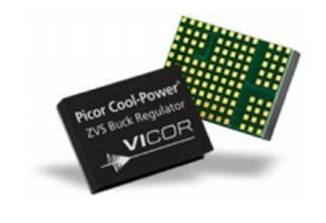The energy storage device in a forward converter is positioned on the rear side of the BUCK inductor, making the forward transformer less complex compared to a Flyback transformer. Its main functions include voltage and current conversion, electrical isolation, and energy transfer. When calculating the forward transformer, engineers typically start by analyzing the BUCK inductor located at the secondary side of the transformer. The input voltage for this inductor is the secondary output voltage of the forward transformer minus the forward voltage drop across the rectifier diode. Hence, a forward power supply can be considered an isolated version of a BUCK converter.

Choice of Primary and Secondary Turns
Taking a three-winding reset forward transformer as an example, once the turns ratio is determined, the next step is to calculate the number of primary and secondary turns. Some engineers believe that fewer turns are better for the forward transformer under full load conditions, but this is actually a misconception. The number of turns directly affects the primary inductance, which influences the excitation current. A smaller excitation current leads to higher efficiency, while too few turns may increase delta B, potentially causing core saturation if the air gap is not properly managed.
Magnetic Reset
Whether it's a single-tube or double-tube forward configuration, magnetic reset is essential. This process involves resetting the transformer’s core after each switching cycle to prevent saturation. The reset current is crucial; if too small, it might not effectively counteract the residual magnetism. After the MOSFET turns off, the primary winding induces a reverse voltage, allowing the reset winding to generate a current that demagnetizes the core. In high-power applications, a small air gap is often added to reduce leakage inductance and improve reliability.
Duty Cycle and Turns Ratio
The duty cycle of a forward converter is primarily influenced by the secondary-side BUCK circuit. In continuous conduction mode (CCM), the output voltage is given by Vo = Vin × D. Knowing the output voltage allows us to determine the turns ratio based on the minimum input voltage, ensuring the maximum duty cycle is accounted for. It's also important to consider the voltage stress on the secondary rectifier diodes when selecting the turns ratio.
Other Reset Methods
Some transformers reset without an additional winding, using external methods like RCD, LCD, or active clamping circuits. Resonant reset techniques utilize the magnetizing inductance and MOSFET junction capacitance, offering efficient reset with minimal heat generation. These methods are often used in high-frequency designs where thermal management is critical.
Loss and EMI
Hard-switched circuits have higher switching losses, especially at higher frequencies. While increasing frequency can reduce the number of turns and improve power density, it also increases EMI and switching losses. Balancing these factors is key to achieving reliable performance. Proper thermal design and careful selection of components help mitigate these challenges.
Forward Transformer Design
Designing a forward transformer involves selecting the appropriate core and bobbin. The Ap method (core area product) is commonly used to estimate the required core size. However, actual design often requires adjustments due to practical constraints. Factors such as leakage inductance, distributed capacitance, and thermal performance must be considered. Choosing the right core material and window fill factor ensures optimal performance and reliability.
Once the turns ratio is determined, the number of primary and secondary turns is calculated based on the input voltage and desired output. The wire diameter is selected based on RMS current, considering skin and proximity effects. Proper winding layout, including the placement of the reset winding, is essential for minimizing losses and improving EMI performance. Finally, verifying the magnetic flux density and checking for saturation ensures the transformer operates safely under all load conditions.
Prototype Pcb Fabrication,Custom Printed Circuit Board,Multilayer PCB board,flexible pcb prototype
Dongguan Jinglin Communication Technology Co., Ltd. , https://www.jlpcba.com